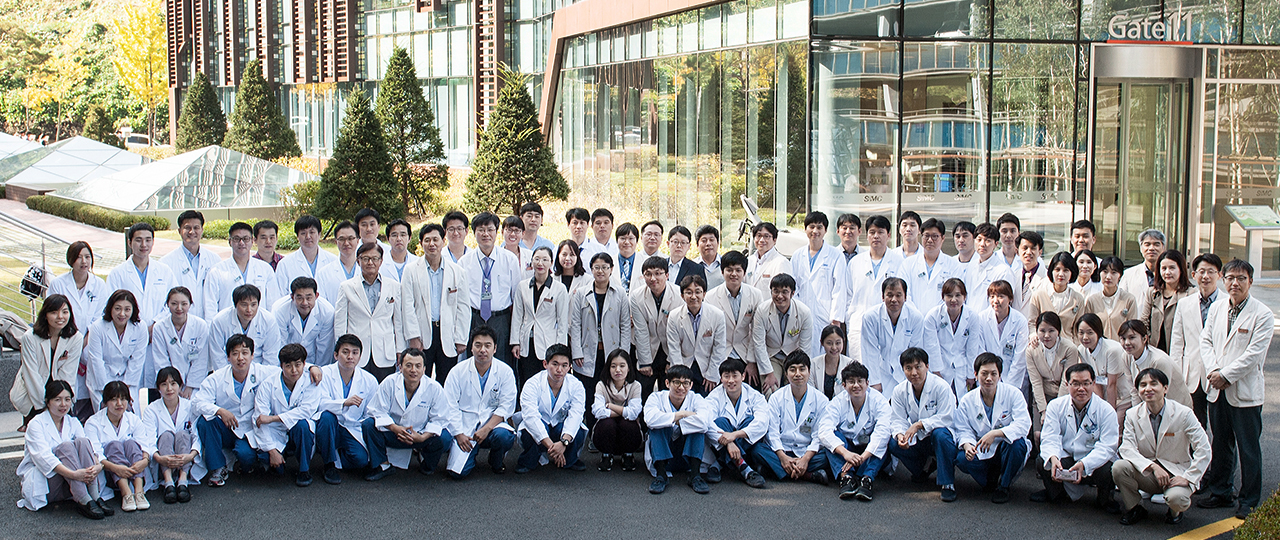Radiation Oncology Faculty / Medical Staff >

The Department of Radiation Oncology at the Samsung Medical Center has treated more than 50,000 new cases as of April 2015 since its first treatment in August 1994. It provides the best treatment for various tumors based on a multi-disciplinary approach through each type of cancer center. We provide not only conventional radiotherapy, but also high-level radiotherapy, including image-guided radiation therapy (IGRT), respiration-gated radiation therapy (RGRT), stereotactic body radiation therapy (SBRT), and intensity-modulated radiation therapy (IMRT). Also, we will be equipped with a proton therapy facility at the end of 2015 to position ourselves as a hub for cancer treatment not only in Korea but also internationally.
Major areas of treatment / Clinics
Breast cancer, gynecologic cancer, colon cancer, urologic cancer, lung and esophageal cancer, mediastinal cancer, head and neck cancer, lymphoma, gastric cancer, liver cancer, pancreato-biliary cancer, pediatric cancer, hematologic malignancy, brain cancer, sarcoma, and skin cancer
Strong points – Application of various up-to-date treatment methods
1. Image-guided radiation therapy (IGRT) and four-dimensional respiration-gated radiation therapy (RGRT)
The Department of Radiation Oncology at the Samsung Medical Center actively uses various treatment plan images, including CT, MRI, and PET-CT to precisely configure the target volume to treat, and has installed, and is running an MRI machine to plan radiotherapy treatment in the proton center. Also, for tumors that are affected by respiration such as those of the lung and liver, we use four-dimensional CT and devices dedicated to four-dimensional radiotherapy, such as Varian iX and Novalis TX, to minimize treatment errors.
2. Stereotactic body radiation therapy (SBRT)
This is a method to irradiate a small target with large amounts of radiation from various directions by precise alignment of the target using a three-dimensional co-ordination system. The Department of Radiation Oncology at the Samsung Medical Center uses the Novalis TX system, a device dedicated to stereotactic body radiation therapy, to actively treat lung cancer, liver cancer, and spinal cancer.
3. Intensity-modulated radiation therapy (IMRT)
Intensity-modulated radiation therapy is a “customized radiation therapy” that fractionates and controls the intensity of individual surfaces to be irradiated to minimize the irradiation of normal tissue and to selectively irradiate cancerous tissue. In the Department of Radiation Oncology at the Samsung Medical Center, we not only have intensity-modulated radiation therapy using linear accelerators, but also the TomoTherapy and RapidArc systems dedicated for this use.
4. Proton therapy
The proton therapy device accelerates protons, the nucleus of the hydrogen atom, using a cylindrical accelerator (cyclotron) to destroy cancer tissue, and is known as the “cancer treatment dream device.” The proton beam passes through the body without affecting normal tissue and delivers its maximum energy to the tumor tissue and then dissipates. Proton therapy can be applied to all types of cancers that are indicated by conventional X-ray treatments, and even though it is more effective than conventional radiotherapy, it has fewer complications.
The Samsung Medical Center plans to begin proton therapy by the end of 2015, and also plans to fit cutting-edge treatment support devices, other than the rotational irradiation proton therapy system. These include a respiratory-gated proton therapy system which follows and treats tumors that move on respiration, an intensity-modulated proton therapy (IMPT) system, and cone beam real-time computed tomography, which confirms a tumor just before treatment using a specially designed CT scan.